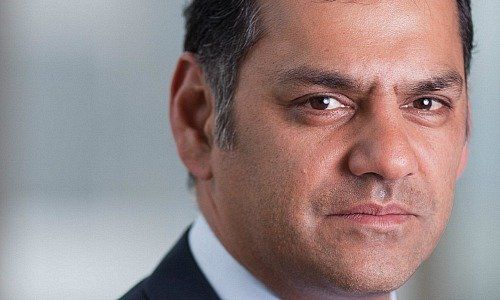Financial regulators have sought ways to let failing banks collapse and unwind without jeopardizing stability in the wider financial system. Banco Popular is a blueprint for how to do so, Stephen Thariyan writes in his essay for finews.first.
finews.first is a forum for renowned authors specialized on economic and financial topics. The texts are published in both German and English. The publishers of finews.com are responsible for the selection.
With news headlines focused on U.K. and French politics of late, the failure of a large Spanish bank made few waves as European regulators brought the issue to a swift and decisive close. On 6 June, the European Single Resolution Board (SRB), the entity set up in 2015 to supervise and manage major bank failures in the euro area, deemed that Banco Popular Espanol, Spain’s fourth largest bank, was «failing or likely to fail», citing deteriorating liquidity as a primary concern.
The board determined that the bank was no longer viable and ordered its resolution on the grounds that a private sale was not forthcoming and that a resolution would protect depositors and preserve financial stability. The SRB imposed about 3.3 billion euros of losses on the bank’s securities holders.
«It is a blueprint on how to resolve sizeable banks in a manner that limits market contagion»
It did this by cutting Popular's equity to zero before bailing-in the subordinated bonds. Additional Tier 1 and legacy Tier 1 capital instruments were cut to zero while Tier 2 capital instruments were converted into common stock, which were also then written down to zero. The bank was subsequently sold to Santander for 1 euro. Senior bonds were protected and are being transferred to Santander; the fact that in Spain senior debt ranks pari-passu (equivalent) with deposits has probably weighed on regulators’ decisions not to bail in these bonds.
Since the 2008 financial crisis, resolving troubled banks without significantly disturbing financial stability has been a major concern for financial regulators. The Banco Popular case offers a promising blueprint for regulators on how to resolve sizeable banks in a manner that limits market contagion, which does not involve taxpayer bailouts, and instead uses equity-like instruments explicitly intended for the purpose.
«The acquisition could be broadly positive for Banco Santander»
It also helps showcase the range of powers that regulators now have to deal with bank problems, ranging from skipping coupons on subordinated bonds up to bailing-in capital securities and potentially selling the business.
In my view, there are three key takeaways:
- The Banco Popular situation was made easier thanks to a willing buyer waiting in the wings. This will not always be the case leaving questions around bailing-in senior bondholders and business continuity.
- Given that the resolution was implemented when the bank still had capital over the regulatory minima, this begs the question of whether the differential between Additional Tier 1 and Lower Tier 2 bonds might be overstated. In a situation where Additional Tier 1 bonds are at risk due to expected capital shortfalls, it is likely a bank would be deemed «likely to fail» ahead of triggering loss absorption mechanisms and is therefore put into resolution with all capital securities being bailed in.
- I believe the acquisition could be broadly positive for Santander, which has bought the distressed bank for 1 euro.
Over the last few years, credit investors have grown accustomed to operating in what has felt like a ‹default-free› zone. While markets continue the strong momentum of the past 12 months, idiosyncratic risks persist and detailed credit analysis remains our first line of defence.
With substantially bigger downside than upside in credit markets, spotting the bad ones should be the number one priority.
Stephen Thariyan is the Global Head of Credit in charge of the 30-strong credit team of portfolio managers and analysts at Janus Henderson. Prior to joining Henderson in 2007 as Head of Credit, Stephen was a portfolio manager at Rogge Global Partners responsible for investing in corporate bonds and credit derivatives globally. He was previously a director and senior analyst at NatWest Markets’ credit rating and research unit where he led teams of sector analysts in credit research. He started his career as an accountant at Ernst & Young in 1988 and later moved to become senior auditor at Chevron Corporation. Stephen graduated from the University of Newcastle-Upon-Tyne with a BA (Hons) in Accountancy and Financial Analysis.
Henderson Global Investors merged with Janus Capital Group in May 2017.
Previous contributions: Rudi Bogni, Peter Kurer, Oliver Berger, Rolf Banz, Dieter Ruloff, Samuel Gerber, Werner Vogt, Walter Wittmann, Alfred Mettler, Peter Hody, Robert Holzach, Craig Murray, David Zollinger, Arthur Bolliger, Beat Kappeler, Chris Rowe, Stefan Gerlach, Marc Lussy, Nuno Fernandes, Beat Wittmann, Richard Egger, Maurice Pedergnana, Marco Bargel, Steve Hanke, Andreas Britt, Urs Schoettli, Ursula Finsterwald, Stefan Kreuzkamp, Katharina Bart, Oliver Bussmann, Michael Benz, Peter Hody, Albert Steck, Andreas Britt, Martin Dahinden, Thomas Fedier, Alfred Mettler, Brigitte Strebel, Peter Hody, Mirjam Staub-Bisang, Guido Schilling, Adriano B. Lucatelli, Nicolas Roth, Thorsten Polleit, Kim Iskyan, Dan Steinbock, Stephen Dover, Denise Kenyon-Rouvinez, Christian Dreyer, Peter Kurer, Kinan Khadam-Al-Jame, Werner E. Rutsch, Robert Hemmi, Claude Baumann, Anton Affentranger, Yves Mirabaud, Katharina Bart, Frédéric Papp, Hans-Martin Kraus, Gerard Guerdat and Didier Saint-Georges.



































